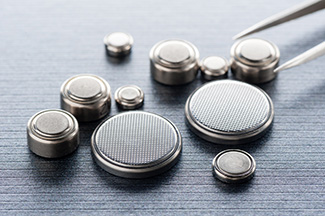According to a study from the Pediatrics journal, between 2010 and 2019, over 7,000 people visited the ER due to battery-related injuries. Many of the patients were children. The study showed that children under the age of five are at the greatest risk for injury from swallowing tiny lithium “button” batteries.
What are button batteries?
The first thing to know about button batteries is that they are everywhere! You can find them in things like:
- Calculators
- Hearing aids
- Laser pointers
- Digital thermometers
- Games and toys
- Light-up bouncing balls
- Penlights
- Talking books
- Singing greeting cards
- Blinking tree ornaments
- Clip-on reading lights
- Smartwatches
In some of these objects, it can be very easy to remove the battery. If you swallow a button battery, you may experience wheezing, coughing, gagging, and vomiting while eating or drinking. However, button batteries remain dangerous even when removed.
Related: Tampa Bay Remains a Dangerous Place for Pedestrians
Saliva can interact with the current if a child swallows one of these batteries. This can result in a chemical reaction that can severely burn the child’s esophagus. Representatives of the Children’s Hospital of Philadelphia warn that the result could be perforation of the esophagus, vocal cord paralysis, or trachea (airway) erosion. Inserting a lithium battery in the nose or ear can cause serious harm, like perforation of the nasal septum, hearing loss, or facial nerve paralysis.
What to do if swallowed
Call the National Battery Ingestion Hotline at 800-498-8666 if someone swallows a button battery or has one in their nose or ear. Then, seek medical attention right away. If a child swallows a battery, do not give them anything to eat or drink until an x-ray shows the battery is no longer in their esophagus. Batteries must be removed from the throat, nose, or ear as quickly as possible to avoid lasting damage.
How to dispose of button batteries
When it’s time for disposal, place your battery or the item containing the battery in a plastic bag. You can also put electrical tape over the battery’s terminals for extra safety. Li-ion batteries and the devices they contain, such as cell phones and tablets, should be taken to a recycling center. You can also visit organizations like Urban E-Recycling where they handle batteries separate from other recyclables to prevent the possibility of fire.




























